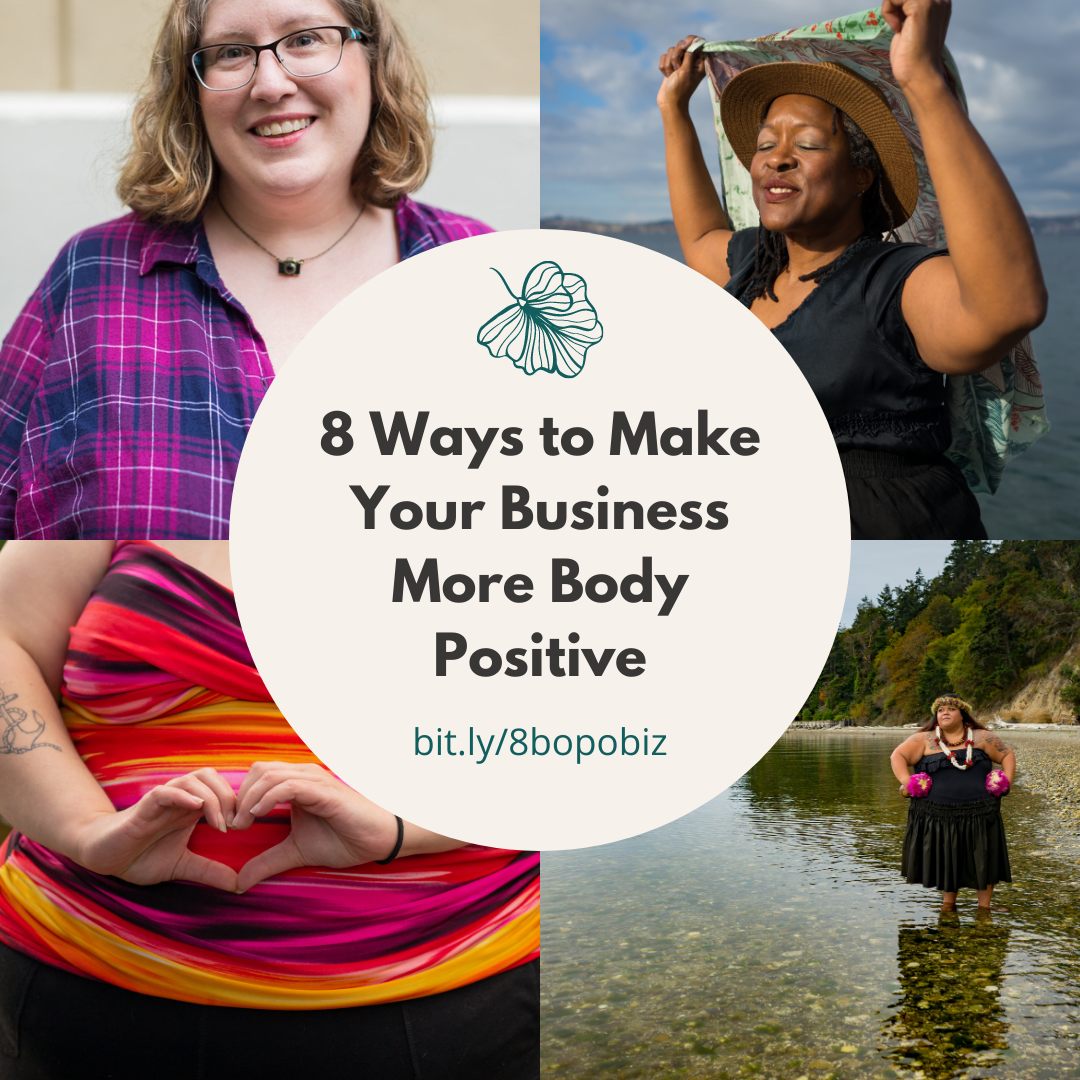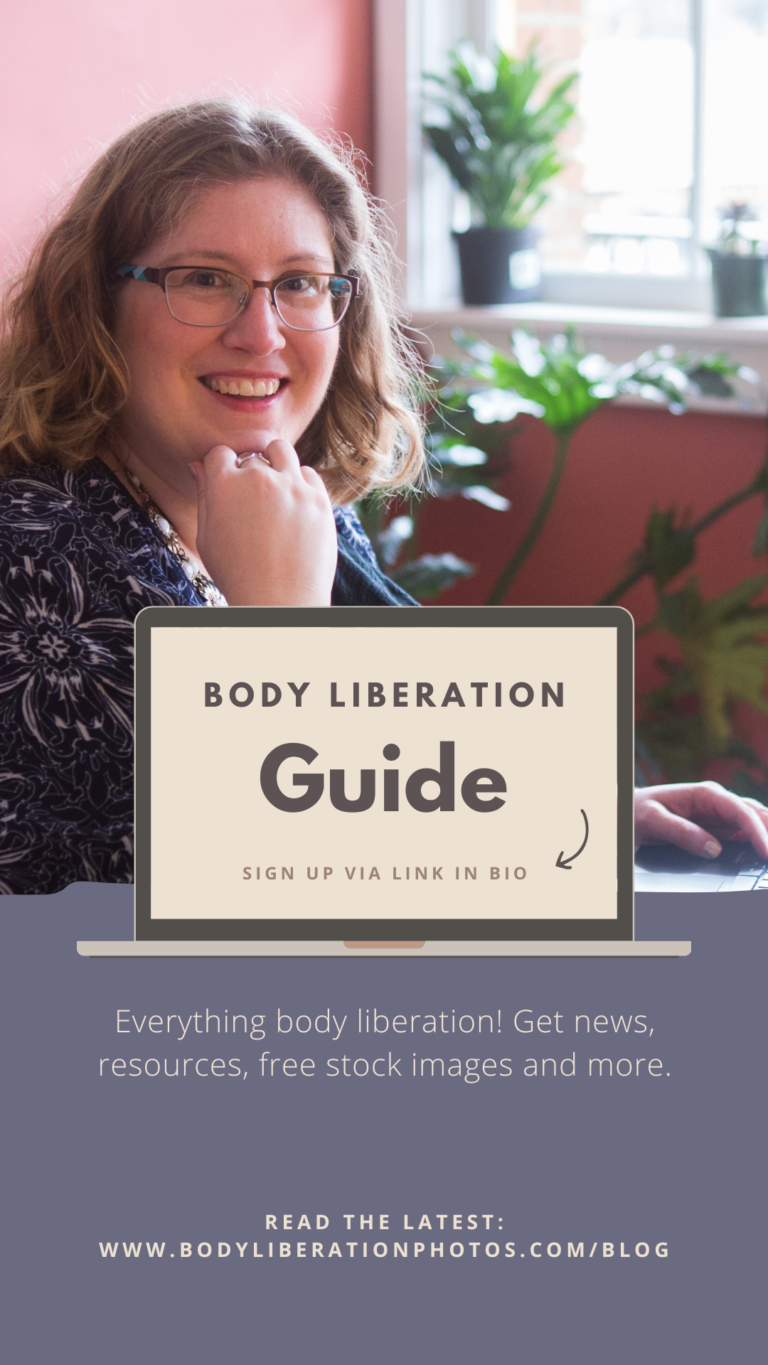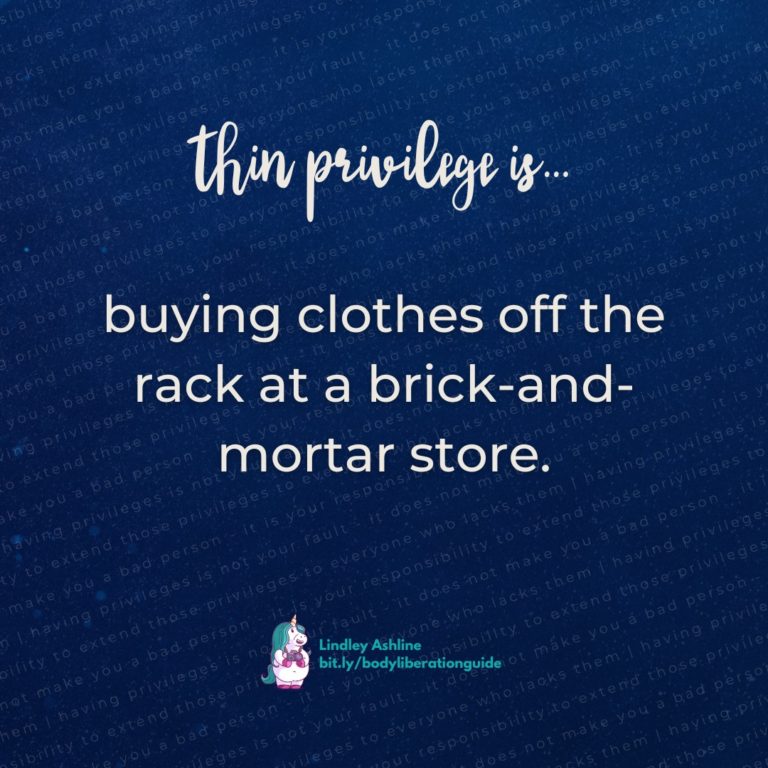8 Ways to Make Your Business More Body Positive
Image description: Lindley, a fat white woman with blonde hair, stands in front of a wall covered in brown and yellow ivy. She’s wearing a pink and blue plaid top and a necklace with a camera charm.
This post originally appeared on the site Fat Girl Reviews.
If you’ve been on the internet for a hot minute, you’ve probably heard of body positivity. From plus-size model Ashley Graham to actress Jameela Jamil, the movement has some high-profile promoters — and a valuable outlook on the worth and beauty of all bodies.
What does body positivity have to do with your business? Everything. By incorporating its principles into your business, you can both make the world a better place and find an entirely new set of customers who’ve been just waiting for you to open up to them.
When you run a small business, your budget is often even smaller, making “make my business more positive for different types of bodies” and “figure out what more people need from me” seem like impossible projects. The good news is that there are lots of things you can do at low cost to make your work and your business accessible to more people.
Here are eight easy and (relatively) inexpensive ways to make your business more welcoming, positive and accessible for people in all kinds of bodies.
1. Learn the lingo.
“Body positive” seems easy enough to understand: let’s be positive about all kinds of bodies! And just embracing and living this one concept will make your business better and available to a wider range of bodies.
But if you really want to honor all bodies and dive deeper into how bodies that aren’t thin, white and able-bodied experience the world, it can get confusing fast. Marginalization? Intersectionality? Do what?
At the bottom of this article, I’ve included a glossary of terms you might encounter while listening to other people speak about their experience in their bodies. I’ve used some of them in this article as well. You don’t need to become an expert on marginalized bodies, but a basic understanding of each term will help you move forward and ask intelligent questions, and understand how your own body and others experience the world — and how that affects your business.
Though there are many intersections of privilege and marginalization, in this article I’ll be focusing on body size. I’ve reclaimed the word “fat” and use it as a neutral descriptor in this piece. You don’t need to be comfortable using the word for yourself or others, but don’t be offended or shocked when the many other people who’ve reclaimed this word use it to describe themselves.
Quick Fix: Be familiar with the terms in the Terms to Know section at the bottom of this article so that you can discuss them when they come up regarding your business.
2. Be aware of body privilege and how it affects you and your business.
I’m white. I have blonde hair that falls into gentle waves with little to no styling. I’m fat, but the way I carry my weight makes me look smaller than I am. My skin is mostly clear. I had braces as a teen, so my teeth are mostly straight. I can fit into the top sizes of brick-and-mortar plus-size clothing stores.
These are my body privileges. They’re not things I need to be either proud or ashamed of. They just exist, and that’s okay. We all have some level of privilege in our lives. People with smaller bodies than mine have more thin privilege than I do, and I have more thin privilege than bodies larger than mine.
Here’s a good resource for further reading on thin privilege and how it affects the world.
I need to stay aware of that as I move in the world and interact with other people. For example, just because I can still fit into the top sizes at plus-size stores and barely squeeze into some booths at restaurants doesn’t mean all fat people can. If I assume that, say, restaurant booths work for all bodies and plan an event at a restaurant that only offers booths, I’m excluding people whose bodies are too large for those booths (and some people with disabilities or illnesses that affect how they sit).
Not only would my planning that event at a restaurant that excludes some bodies be inconsiderate (or even career-damaging, depending on the situation), it would then require anyone who still wants to attend and whose body has been excluded to do the labor of bringing the exclusion to my attention, and for all they know, I might not react well.
Quick Fix: The next time you plan an event, ask the largest person who might attend what kind of physical or logistical setup would work for their body. Then, bring your event plans as close to that as you can manage.
Which brings me to….
3. When you get feedback, listen.
Getting called out sucks. Complaints suck. Trust me, I’ve been there. But it’s essential to listen to and absorb feedback if you want to improve in how you treat other people, especially people with less privilege than you.
It’s so easy to feel defensive when people give you negative feedback, especially if it’s something you didn’t see coming. As business owners we work so incredibly hard to make our customers happy and to feed ourselves. But as imperfect human beings, we run the risk of designing our businesses, processes, and marketing in ways that reflect our own body privilege and exclude others. When people call attention to those gaps, they’re giving us a gift.
That doesn’t mean you always have to have the perfect, grateful response on the spot! Sometimes it means thanking the person who’s giving you that feedback and then going away and sitting with your feelings until you’ve wrestled with it and are ready to take action. That’s completely okay. It’s also okay to ask clarifying questions or for more information, as long as you avoid being defensive or combative.
What’s not okay is rejecting feedback out of hand or snapping at the person who gave it to you. That’s how you and your business get a bad reputation.
Quick Fix: The next time you get negative feedback about how your business serves certain bodies (or doesn’t), thank the person giving you the feedback and then go sit with it for 24 hours before responding further.
4. Watch your assumptions.
Don’t assume that everyone wants to be thin, or “healthy” (which looks different for every body), or wealthy.
Also, don’t assume the world stops at a size 24. One of the more painful things about being a fat person on the internet is watching hundreds of small businesses proudly announce that they serve “all bodies” or carry “all sizes” when they most certainly don’t. I personally know people who wear a clothing size 36, 38, or 40, and I can count on one hand the number of businesses who use “all bodies” or “all sizes” in their marketing that are actually willing to serve my fattest friends.
When you exclude some bodies from buying your products or services but say you include everyone, you’re doing several things:
- Gaslighting the excluded people by telling them you’ll serve them when you won’t.
- Giving your business a false appearance of inclusivity.
- Giving the people you’re willing to serve a false impression that people whose bodies are often excluded have many more choices than they actually do.
For example, I see this play out most often in plus-size fashion, where companies proudly claim to carry “all sizes” but most often stop at a 20 or 24. This creates an environment where not only can fatter people not buy from those companies, but people in smaller bodies — who don’t realize they’ve been misled — scoff at fat folks’ complaints about not being able to find clothing.
Quick Fix: Review your business materials for phrases like “all bodies,” “all sizes,” “one size fits all,” “whether you weigh 100 pounds or 300” or “all ages, from 9 to 96.” These phrases are guaranteed to exclude people. Replace them with wording that more accurately reflects what your business offers.
5. Examine your employment practices.
What kind of body privilege does your staff as a whole hold? What kind of diversity is shown in your staffing, or are all of your employees thin, white, cisgendered and straight?
Your customers and potential customers vet you in advance and consider whether to become customers based partly on whether they feel you can serve them and their bodies. And of course, part of that calculation is “Does this business have anyone around who looks like me?”
For example, I go to the one yoga studio in my area that has larger instructors. A studio with bigger-bodied instructors has the highest chance of not only treating my body with dignity and respect, but of knowing how to modify yoga poses for my body. Let’s be honest: My boobs and tummy get in the way of “traditional” poses a lot, so I’m going to attend a studio that can deal with that without making me feel humiliated, put on the spot, or ignored.
Quick Fix: Ensure that your employees who have a lot of body privilege understand that they need to treat all bodies equally, and how to do that. Model that behavior in your own actions. The next time you hire, consider bringing in someone with a less privileged body.
6. Examine your marketing materials.
Are all the bodies on your website thin and white? What about your brochures and your social media channels? As Emily Nagoski says, “The images we see—or don’t see—matter. They tell us what’s possible.” Your business might be small, but it’s part of our larger culture, and what you share and post affects both your existing customers and the wider world.
If you’re only displaying one type of body, you’re telling potential customers that that is the one body you find valid and worthy. What would happen if you told the world that you see and honor many different types of bodies by putting images of those bodies in your marketing?
Quick Fix: Add one image of a person who’s fat, a person of color or uses mobility devices to your website this month.
7. Put your public presence where your mouth is.
If your business is body positive, say so! In public, as loudly as possible. Put it on a sign on the front door of your brick-and-mortar location. Put it on the front page of your website. Tell your family and friends. Talk about it on social media.
Where possible, clarify what that means. Does it mean you serve all bodies with respect and dignity? Does it mean that you carry all possible clothing sizes? Does it mean you refrain, and ask others to refrain, from body-negative talk like weight loss discussions?
Quick Fix: Add a paragraph to the “About” page of your website this week that talks about your commitment to body positivity and acceptance.
8. Lift up the work and voices of marginalized people.
Part of being marginalized is having fewer chances to be heard. You can help bring balance to the world by infusing your business and public presences with a diverse range of voices and experiences. Not only are you helping other people, you’re serving your customers by presenting them with a wide range of voices.
You can do this by:
- Following, commenting on and sharing the work of fat voices often and loudly
- Suggesting these resources to others who live in thin bodies
- Promoting work by fat people in your industry
- Inviting fat people to partner with you, to speak at events, to be on panels and podcasts
- When you invite fat people in, ensure they’re not treated as tokens. Defend them loudly and publicly from fat hatred, even if that means getting over a fear of confrontation
- Use the words “fat” and “fat acceptance” and don’t water it down for fear of looking too radical
- Sticking up for fat people whenever you see prejudice, especially on the public internet
- Listening more than you speak when in conversation with fat people
- Support the work of fat people with your dollars and your time. Support and promote their Kickstarters. Write recommendations for their books and testimonials for their products
Quick Fix: Use these two lists to find great fat voices to follow. Start listening and sharing.
Food for Thought
Here are some questions to ask as you make your business more body positive:
- What body privileges do I have? How do they affect how I move in the world and interact with my employees and customers?
- Are there ways my body privilege has affected my business practices that I didn’t notice before?
- Does my business exclude people who are fat? Who live with disabilities? Who use accessibility devices like walkers or wheelchairs? Who are poor or working-class? Who have difficulty reading? Who are different from me in some other way?
- How can I start expanding and adjusting my business to become more body positive? What are five small actions I can take this week?
- How can I make it clear to the public that my business and I accept all bodies unconditionally? What actions will I take if a customer complains about my commitment to treating all bodies equally?
- How can I teach or train my employees to treat people in all bodies equally? What actions will I take if an employee treats someone poorly due to their body?
Terms to Know
- Body positive: The concept that all bodies have worth as they exist today (read more).
- Fat acceptance: The concept that fat bodies are just as worthy as thin bodies (read more).
- Fat positive: The concept that fat bodies are not just worthy, but have beauty and value of their own (read more).
- Health at Every Size: The concept that every body can achieve its own version of health at its current size (read more).
- Intuitive eating: Listening to your body and eating in accordance with it (read more).
- Privilege: “A set of unearned benefits given to people who fit into a specific social group” (read more).
- Intersectionality: Overlapping and interdependent systems of discrimination or disadvantage (read more).
- Marginalization: “Pushing a particular group or groups of people to the edge of society by not allowing them an active voice, identity, or place in it” (read more).
Resources
Skinny Shaming Is Real — & So Is Thin Privilege
For Larger Customers, Eating Out Is Still a Daunting Experience
Let’s Talk About Weight Bias & Stigma
Hi there! I'm Lindley. I create artwork that celebrates the unique beauty of bodies that fall outside conventional "beauty" standards at Body Liberation Photography. I'm also the creator of Body Liberation Stock and the Body Love Shop, a curated central resource for body-friendly artwork and products. Find all my work here at bodyliberationphotos.com.







